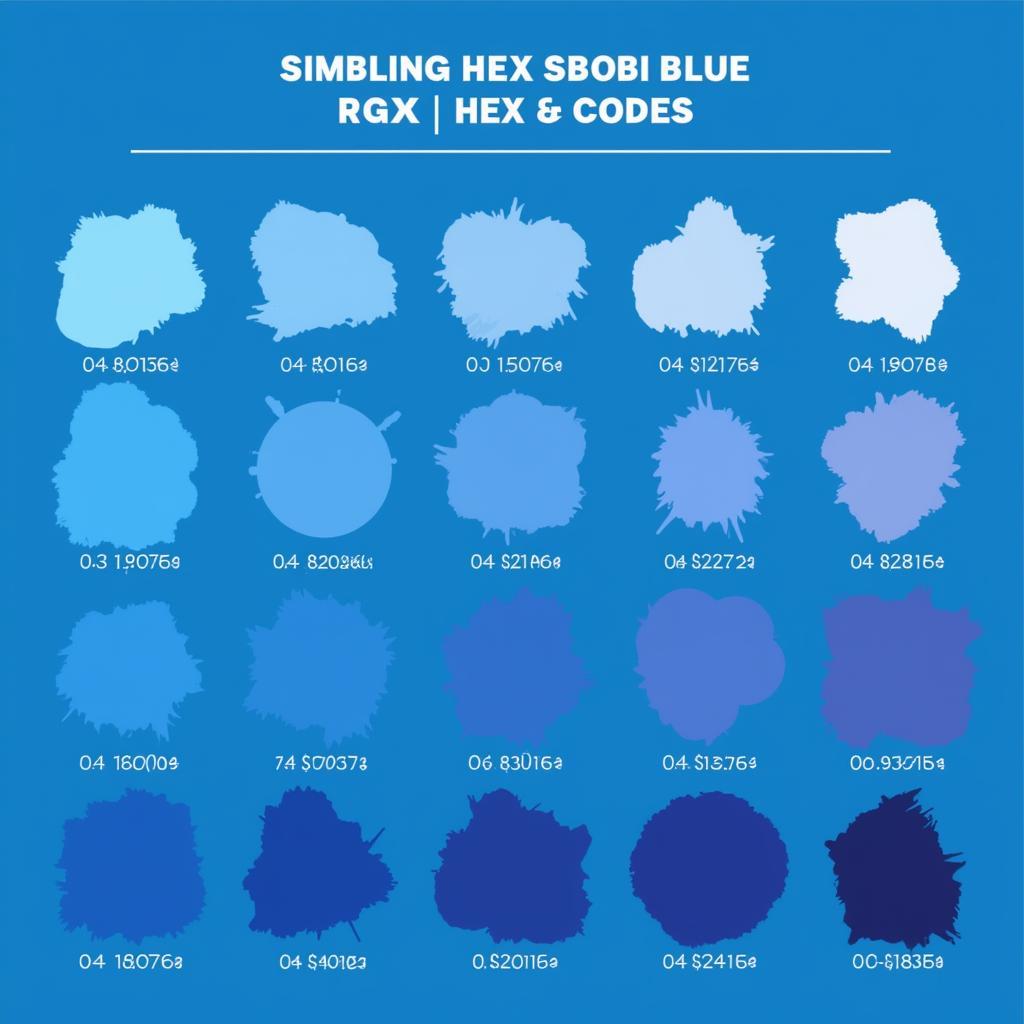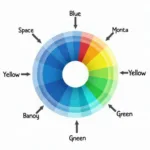Blue, the color of the ocean and the sky, has captivated artists and decorators for centuries. But how do you make blue color? Understanding the creation of this mesmerizing hue opens up a world of possibilities for artistic expression and personalized design. Dive in with Color Box Hanoi as we explore the fascinating world of blue and how it’s made.
Unlocking the Secrets of Blue: From Pigments to Paint
Historically, creating blue was a challenge. Ancient civilizations treasured rare minerals like lapis lazuli, painstakingly ground to produce the vibrant ultramarine pigment. Later, innovative techniques led to the development of synthetic blues, like Prussian blue and cobalt blue. These discoveries revolutionized art and design, making blue readily available for a wider range of applications.
Mixing Your Own Blue Hues: A Guide to Primary Colors
What colors do u mix to make blue? Here’s the surprising truth: you can’t mix other colors to create true blue. Blue is a primary color, meaning it serves as a foundation for other colors. By combining blue with other primary colors, red and yellow, you can create a spectrum of secondary and tertiary colors, like green, purple, and brown. how do you make the color blue provides more in-depth information about creating different shades of blue.
The Science Behind Blue: Exploring Light and Pigments
Understanding how we perceive blue involves both physics and chemistry. When light hits an object, certain wavelengths are absorbed, and others are reflected. Blue objects absorb all wavelengths of light except blue, which is reflected back to our eyes. This principle applies to both natural and synthetic pigments. The chemical composition of a pigment determines which wavelengths of light it absorbs and reflects, giving it its characteristic color. Want to learn more about making specific shades of blue? Check out how do you make the color royal blue.
Blue in Digital Design: RGB and Hex Codes
In the digital world, blue is created using the RGB (Red, Green, Blue) color model. By adjusting the intensity of red, green, and blue light, screens can display a vast range of colors, including various shades of blue. Each shade is assigned a specific hex code, a six-digit alphanumeric combination that represents the color’s RGB values. This allows for precise color control in digital design.
 Digital Blue Representation: RGB and Hex Codes
Digital Blue Representation: RGB and Hex Codes
“Understanding the science of color is essential for effective design. Knowing how blue is created, both physically and digitally, empowers you to manipulate color and create truly impactful visuals.” – Dr. Anya Sharma, Color Scientist
How Do You Make Navy Blue with Food Coloring?
Using food coloring offers a fun and accessible way to experiment with blue. To create navy blue, start with a base of blue food coloring and gradually add small amounts of black. The more black you add, the deeper and richer the navy blue becomes. For a detailed guide, check out how do you make navy blue with food coloring.
“The beauty of blue lies in its versatility. From delicate pastels to deep, dramatic shades, blue offers a vast range of possibilities for any design project.” – Maria Nguyen, Interior Designer
To conclude, while you can’t mix other colors to create true blue, you can manipulate existing blue pigments and digital color models to achieve a wide spectrum of shades. Understanding the history, science, and techniques behind making blue empowers you to use this captivating color effectively in your creative endeavors.
FAQ
-
Is blue a primary color? Yes, blue is a primary color.
-
Can you mix colors to make blue? No, blue is a primary color and cannot be created by mixing other colors.
-
What is the hex code for pure blue? The hex code for pure blue is #0000FF.
-
How do you lighten blue paint? Add white paint gradually to lighten blue paint.
-
How do you make different shades of blue? Combine blue with other colors or adjust the RGB values in digital design. For more specific mixing instructions, visit what colors do u mix to make blue.
-
What are some popular shades of blue? Some popular shades of blue include sky blue, navy blue, royal blue, and turquoise.
-
How was blue pigment made historically? Historically, blue pigments were made from minerals like lapis lazuli or through chemical processes.
Need More Help with Your Color Journey?
For personalized color consultations and expert advice on paint selection, contact Color Box Hanoi:
Phone: 0373298888
Email: [email protected]
Address: 86 Cầu Giấy, Hà Nội
Our team is available 24/7 to assist you. Also, check out how do you make the color tiffany blue for specific guidance on achieving this iconic shade.

